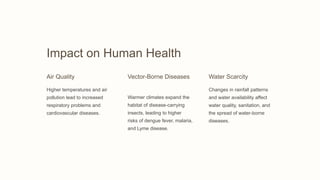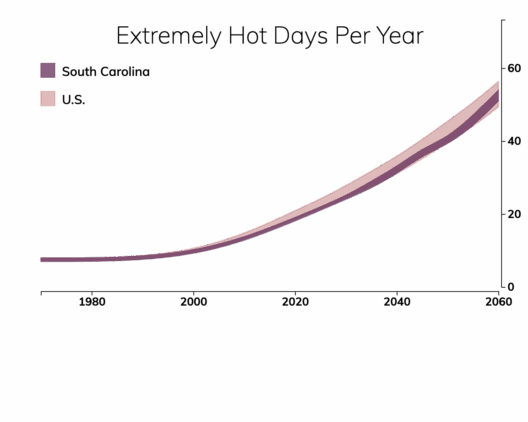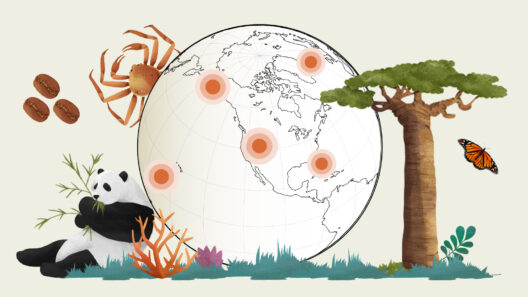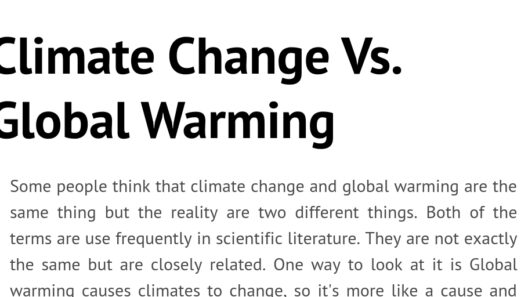The phenomenon of global warming is a complex interplay of natural and anthropogenic forces, where the concept of heat producing more heat establishes a vicious cycle that exacerbates environmental degradation. At the core of this dilemma lies the enhanced greenhouse effect, which occurs when greenhouse gases (GHGs) accumulate in the atmosphere, trapping heat and leading to an increase in Earth’s average temperature.
As the planet warms, several processes are set in motion that reinforce the initial warming, creating a feedback loop that is difficult to reverse. Understanding this vicious cycle is essential in addressing the multifaceted challenges posed by climate change.
Firstly, let’s examine the role of greenhouse gases. Carbon dioxide (CO2), methane (CH4), and nitrous oxide (N2O) are the primary GHGs emitted through both natural processes and human activities such as burning fossil fuels, deforestation, and agricultural practices. These gases have a high global warming potential, capable of absorbing and re-emitting infrared radiation—effectively serving as a thermal blanket around the Earth. As concentrations of GHGs rise, more heat is retained in the atmosphere, increasing overall temperatures.
One crucial aspect of this heat retention involves the melting of polar ice caps and glaciers. Ice, being highly reflective, known as albedo, plays a significant role in regulating Earth’s temperature. When ice melts, it exposes darker ocean water and land surfaces, which absorb more sunlight and consequently increase surface temperatures even further. This process not only accelerates the reduction of ice but also amplifies global warming, leading to further ice melt—and thus, a detrimental feedback loop ensues.
Moreover, as temperatures rise, permafrost in Arctic regions begins to thaw. Permafrost is a layer of permanently frozen ground that contains vast quantities of stored organic carbon in the form of frozen plant material. As this ground thaws, microbial activity increases, resulting in the decomposition of organic matter and release of CO2 and methane back into the atmosphere. This newly emitted GHGs further exacerbate the greenhouse effect, perpetuating the cycle of heat buildup.
Additionally, warming oceans serve as both a consequence and a catalyst of climate change. Warmer sea temperatures lead to more violent weather patterns—including stronger storms and increased rainfall patterns. Furthermore, warmer waters have a reduced capacity to absorb CO2, thereby exacerbating atmospheric concentrations of greenhouse gases. Ocean acidification, a direct result of increased CO2, subsequently impacts marine ecosystems, leading to diminished biodiversity and fisheries that humans rely upon, thereby creating socioeconomic stresses that can further contribute to climate change.
The influence of heat on heat is also observable in the realm of deforestation and land-use changes. Trees and vegetation act as carbon sinks, absorbing CO2 from the atmosphere and helping to moderate regional climates. When forests are cut down, not only is this carbon absorption lost, but the decomposition of felled trees and disturbed soil releases stored carbon back into the atmosphere. In regions that are already experiencing warming, deforestation can exacerbate local temperatures and lead to conditions that further hinder forest regeneration. This accelerates urban sprawl and reduces greenspaces, which could otherwise help mitigate the heat.
The urban heat island effect is another example of heat producing more heat. Areas with significant urban development tend to absorb greater amounts of heat due to concrete, asphalt, and reduced vegetation. This localized heating can lead to increased energy demands for cooling, leading to more emissions from power plants, which further raises ambient temperatures. Addressing urban planning and incorporating green spaces can help ameliorate this effect, yet many cities face immense challenges in retrofitting existing infrastructure.
In sum, the vicious cycle of global warming—where heat produces more heat—is driven by intrinsic feedback mechanisms that interlink various environmental systems and human activities. The interplay between atmospheric changes, cryospheric responses, oceanic evolution, and terrestrial alterations work synergistically to accelerate global temperature rise. The multifarious pathways through which heat begets further heat necessitate urgent attention and remediation.
Understanding these relationships emphasizes the need for systemic changes in policies and lifestyles. Transitioning to renewable energy sources, enhancing energy efficiency, and implementing large-scale reforestation projects are vital in breaking this cycle. Additionally, fostering sustainable agricultural practices and investing in carbon capture technologies offer pathways to mitigate current emissions and stabilize planetary temperatures.
Ultimately, addressing global warming requires collective action on both local and global scales, integrating scientific understanding with policy and public engagement. The urgency of addressing this vicious cycle cannot be overstated, as the heat produced by our actions may ultimately dictate the future of our planet and its ecosystems.







